“So far gone am I in the dark side of earth, that its other side, the theoretic bright one, seems but uncertain twilight to me.”1 —Ahab, Herman Melville’s Moby-Dick
I get a trapped sick feeling as I pass Cash’s Convenience, where grass breaks through the gas pumps and the windows are dark as the creek. Already considering my escape, I drive the two-lane road that was straightened and paved before I was born, past fields on either side—fields I’ve studied, fields I’ve hunted, fields where I’ve slept out under grieving skies. A red early-twentieth-century barn marks the turn, and I wait for oncoming traffic before pulling up the long gray drive lined with hay bales. Then the house emerges—a tired profound vision behind the walnut trees, bricks as red as Virginia clay or the blood of any deer. Here I am again at Chapel Hill, the farm where my grandmother grew up and which my mother, uncles, and cousins call home. By my blood tradition, I call it home, too.
Situated in the ancient rolling hills of the Shenandoah Valley—the “Breadbasket of the South”—Chapel Hill operated for many years as a wheat farm, and the original porch railings were adorned with sheaves of wheat in tribute to the crop. It would transition to dairy, and, after the car accident early one morning that left my great-uncle RW with an awkward sideways gait, it changed yet again to beef, which was not as physically demanding. The land is now leased to farmers whose cattle graze the same grasslands bison once roamed in great herds.
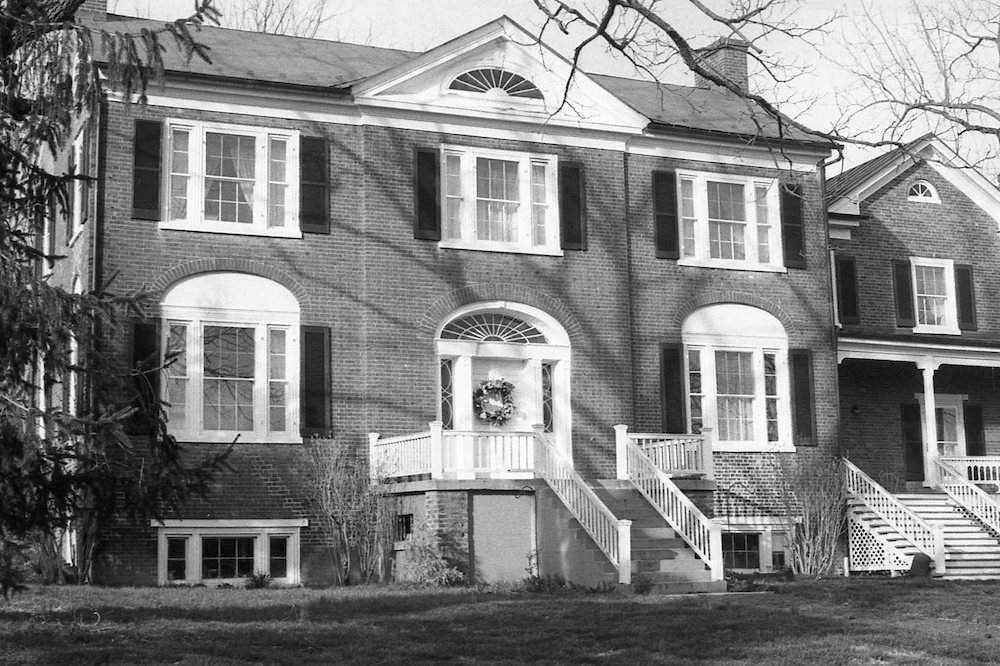
The property was named for an Episcopal chapel that’s no longer standing. John Knight Churchman, a planter and sheriff, bought the land in 1826, and the initial I-house was completed around 1834. Additions have been built over the years, but the eye focuses on the symmetry of the original “I,” structured in three distinct bays. The west and east mirror one another, each with two sets of windows flanked by sidelights and book-ended by a chimney. According to the 1978 nomination for Chapel Hill to become a National Historic Landmark, the unique combination of academic and local vernacular architectural and design features “make it one of the most distinguished of Augusta County’s Federal residences.”2
The outbuildings balance this Planter stateliness with a blue-collar humility. A crooked drive-in corn crib dwarfed by an explosion of walnut trees. A barn patched with sheet metal and slowly collapsing under its own weight. A large metal hangar-like barn—“the Chapel Hill Sauna”—where most functioning machinery is kept. A long open barn with two giant bays housing junk—dressers, tires, chairs, pickup caps. RW’s woodshed, where he made his walnut grandfather clocks and a knife for me out of a file and two walnut slats, my initials scratched into the brass finger guard. A Gothic frame office out of which my great-grandfather practiced law and where we used to play as children; the smokehouse underneath where I have shot at many a groundhog; a dairy with thick, cracked plaster walls housing garden equipment; a sidewalk ending in a magnolia that hangs over the spot where the kitchen once stood. My mother’s cousin Robert lives across the two-lane in the house where Earl Abshire, the long-time farmhand, used to reside. About the time I was born, Mr. Abshire fashioned a walnut bassinet after the one used for generations on the farm, a touching gift save for the cryptic addition of metal handles intended for a coffin.
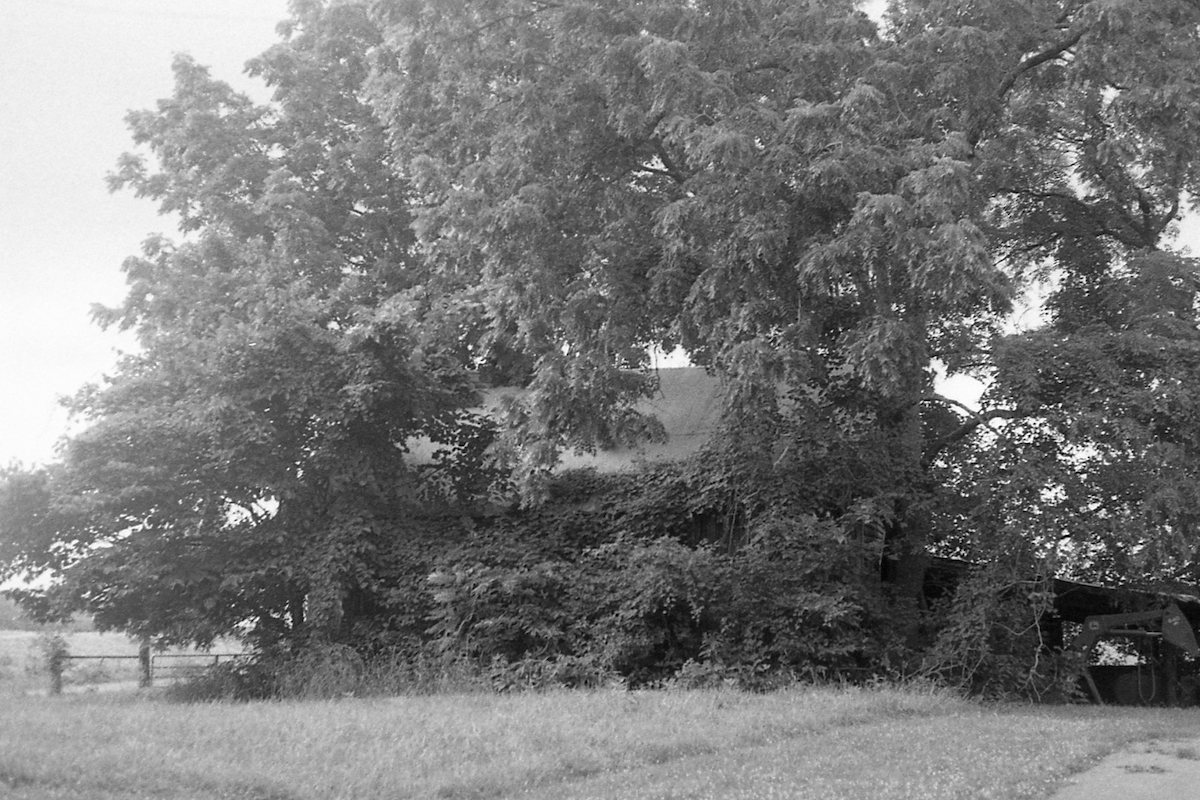
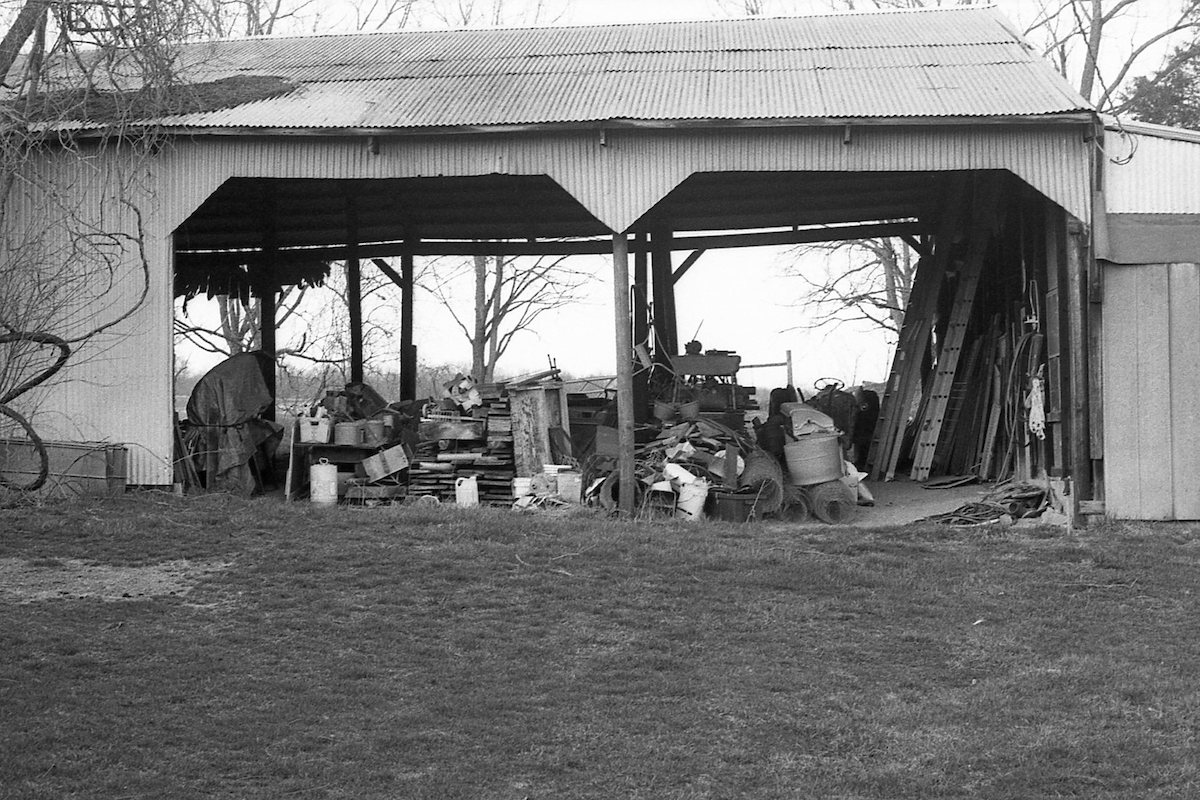
I glimpse the red GMC, the license plate reading “RW Truck” in memoriam, and think back to his last years, ceremoniously sitting along the tree line in this pickup, a hunting rifle beside him. I was always told he was supposed to compete as a track athlete in what would have been the 1944 Olympics, that the games were canceled and he went to the Pacific as an Army Ranger instead, but I can only verify the latter. He survived malaria and the Japanese in the Philippines and New Guinea and returned home and farmed as he’d always done. People remember him springing over fences after a full day’s work even into his middle age. His son Harry recounts fishing as a boy with Robert and RW near McDowell on the Bullpasture River. A feral goat often defended its territory around the bridge, but on this particular day, it became downright aggressive toward Harry. RW and the billy, whose horns I’m told approached two feet in length, clashed at the middle of the bridge, and RW managed to heave the animal down into the harsh riverbed below. It landed on its back, stood up stunned, and never bothered them again. RW’s hands were curved and warped, and the fingers that had not been lost bore nails like talons. He appeared to me to be a man carved of the walnut he worked and shaped—in the end, all he could do.
I think of summer suppers with fresh corn and watermelon and ice cream from the coffin of a chest freezer buzzing under the kitchen window and talk about the weather, family, crops.
I walk through a little courtyard past “Moggie’s dish garden,” a trough filled with broken plates and bowls. I open the screen door without much force, knowing it is still missing its springs and will swing wide, and enter the 1950s back porch (no one uses the front door) where I think of summer suppers with fresh corn and watermelon and ice cream from the coffin of a chest freezer buzzing under the kitchen window and talk about the weather, family, crops. A bounty of produce soon to go bad in baskets and crates. In the kitchen the spicy overripe fruits mingle with smoked cured meat and hardwood fires and dairy, butter, cheese, odors that have worked their way into the house like a flaw one grows to love. No place else smells like Chapel Hill.
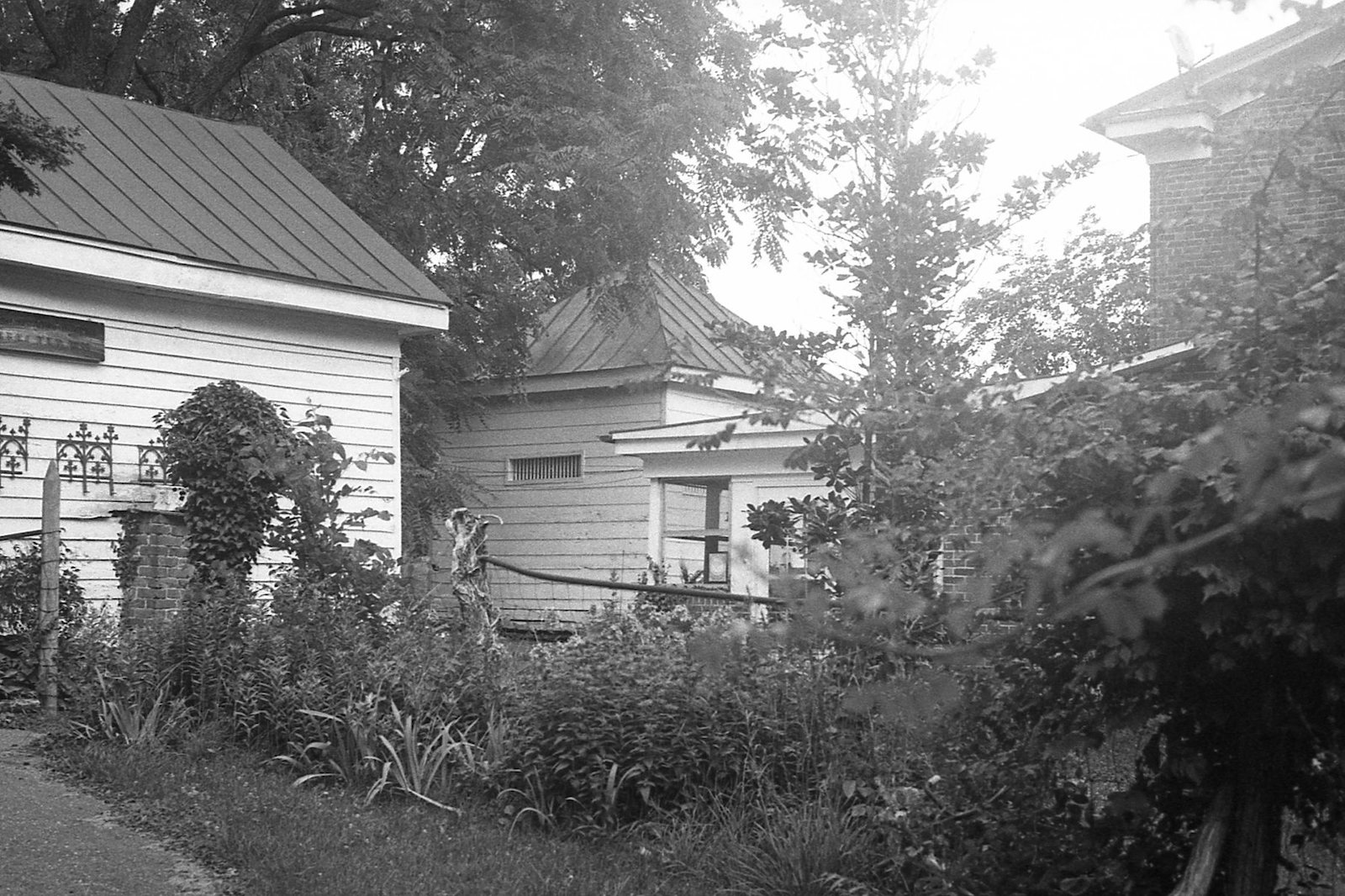
The kitchen is filled with art, images of milk cows and family members displayed in Polaroids and pharmacy prints on the refrigerator, mementos more like artifacts, reminders not so much of the past as of change. The mural my grandmother painted around 1960 overlooks the kitchen table. It portrays the farm from an innocent distance—just out of shooting range—from across the hollow. RW appears on the tractor in the top field, and you can see others in the yard, or over by the apple tree, each a character in the cast. Years ago, Carter (Moggie and RW’s daughter and my mother’s cousin), painted over the mural, a decision she now regrets, though I cannot help but find meaning in the layering, even in art, from one generation to the next. A skilled poet and florist, Carter arranged the flowers for my wedding reception in 2008, an overwhelming task for a party of 200. She touched the fragile soon-to-wilt displays with details so unique to my wife Jessica and me that only we could have understood the genius of her heart. It was such an undertaking that she missed our wedding. When we saw her at the church, just minutes too late, she had that shy tired tragic look I know so well, as if begging for forgiveness yet resigned that it couldn’t be any other way. “Shucks,” she said, “I wish I could have been there.”
She wasn’t the only cousin from the farm to miss our wedding. Robert had a different reason, though he didn’t tell me until the next time I saw him at Tinkling Spring Church for a funeral. At the reception, I saw him standing tall, straight-backed, hands in his pockets. “I wanted to be at your wedding, man,” he said, shaking his head, mumbling as always out of the side of his mouth. “I really did. But that was opening day. You should have known.” He, of course, meant deer season. Totems of gleaming antler and bone seem to adorn every building, every room, from the house to the outbuildings to the barns, a gathering up of a kind of history in blood. People around here often talk of men as hunters and evaluate them on a rubric of deer killed. They measure time by deer as one measures a wilderness by landmarks. “That was the year of that big 8-point, I remember.” “That was 1957, the year of RW’s 14-pointer.” “I recall it was ’98 because I shot that 10-pointer on opening day.”
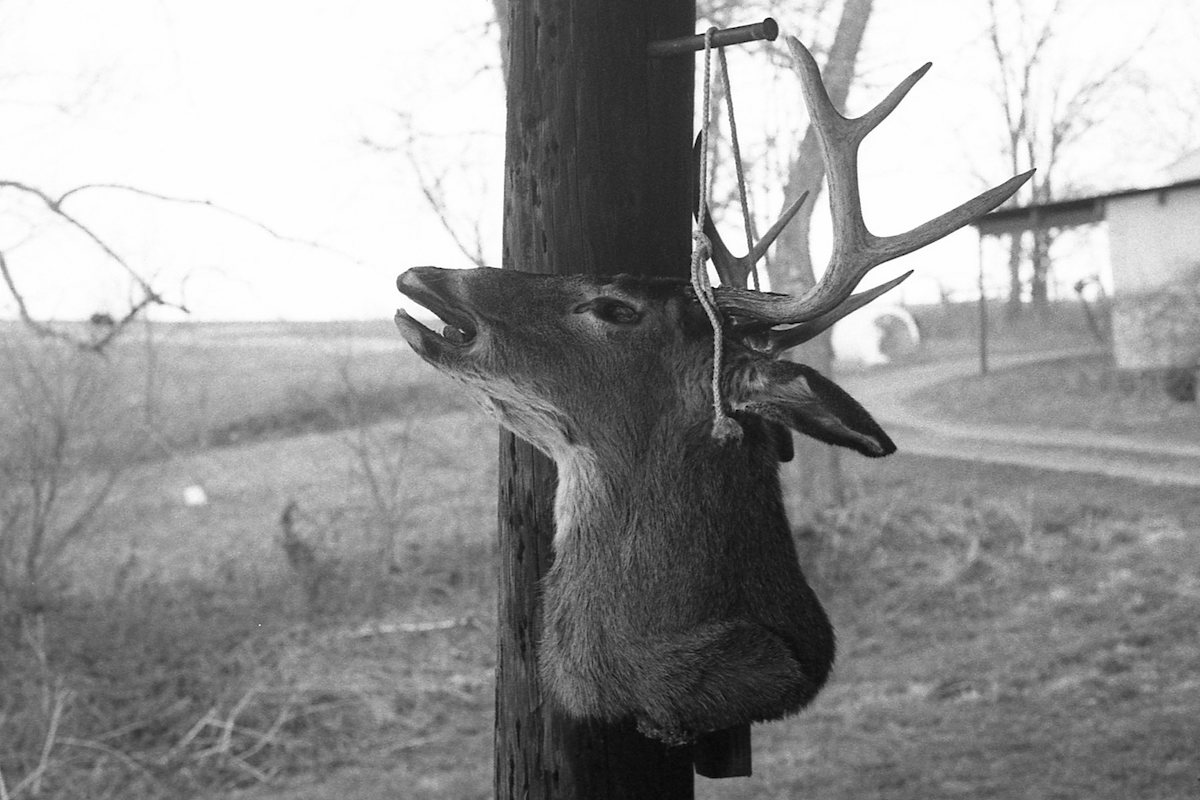
I pass the door to the basement thinking of all the snakes that have slipped soundless through the cracked foundation—sometimes discarding their immense translucent skins—to be found coiled under tables and beds, in bathrooms, in the corners of the house. Photographs fill the dark hall. I am reminded of one Christmas party years ago when Brent, Carter’s husband, was playing the piano, guests savoring his famous venison rolls and singing carols. Some of us were talking with my second cousin Robbie (not Robert), who had broken his leg in a tractor accident. He was about thirteen and seemed more upset about his inability to finish the basketball season than he was about his injury. During the evening, someone placed a wreath on his outstretched, plastered leg. There’s a picture of us—his cousins, second cousins, friends—standing around him in his wheelchair, all of us looking happy.
Other photographs document my prehistory with memories that seem like my own. My grandmother and her sisters, little girls on a single horse. My beautiful great-grandmother Mommom riding a dark horse, refusing sidesaddle. My tow-headed mother as a young girl, maybe two, her dress as white as her hair. She stares up, puzzled, it seems, a thick shadow-black piece of watermelon in her hand, seeds and stains around her mouth. Barefoot, she stands in the soft grass of the lawn with the giant trees out of which doors and clocks were made. My dad and I used to “chunk” walnuts at the trees that grew them in this same yard, watching them explode. The stains of walnuts on our fingers and our clothes would smell all day like the farm.
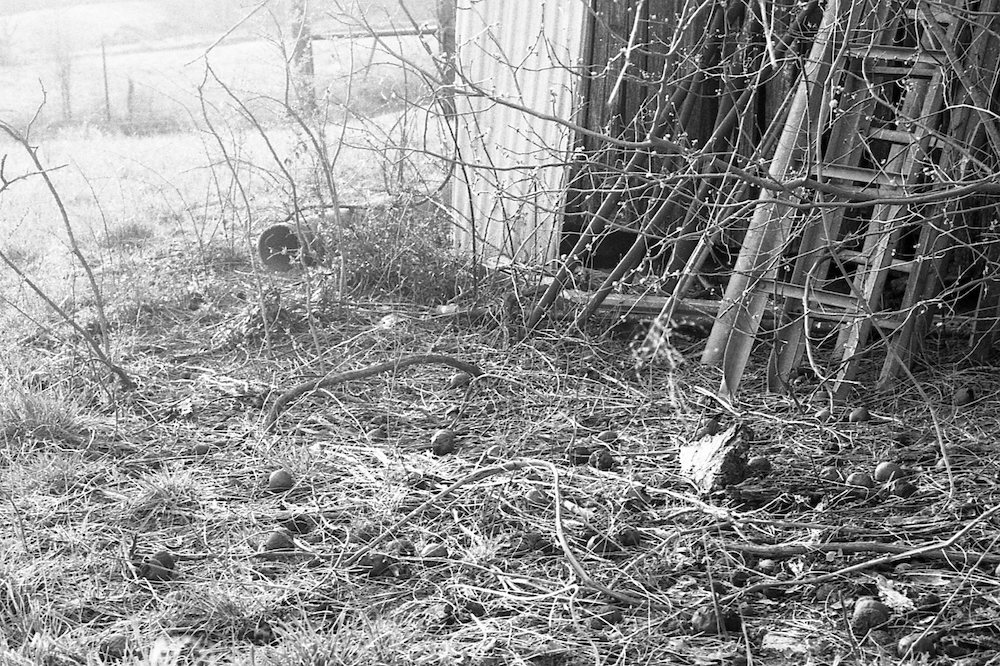
I climb the stairs next to a chair lift, the bridal portraits of Churchman women rising back through time, gowns repeating. I’ve been dreading this, the walking in, the greetings, the situation. I believe RW would feel the way I do now, bashful almost, longing to be somewhere out there, far into the woods. I want to march out and listen to the roar of the highway behind all that once was wild. Instead, I walk into the crowded bedroom. I grip the rough hands of men and hug warm crying women before I can even take it in.
There she lies, sunk in heavy quilts even though it is May, eyes flickering, body faint and skeletal. The house is bustling, strangely festive, a fever of anticipation. Brent is outside painting the chipped Federal trim, rushing to make the house presentable so that Robert can be married in Moggie’s presence. As Moggie and RW’s oldest son (who also bears his father’s name), he would in some traditions be heir to Chapel Hill. But the details of the will are known, and the farm will go to Carter, whose children (my second cousins) were adopted in Romania.” This choice presents the family with the prospect of the farm someday exiting the bloodline while simultaneously remaining in the family.
So here we are, hovering, children and grandchildren, nephews and nieces, and on and on, waiting our turn to say goodbye. We are oblivious to one’s animal instinct to die in peace. Moggie is the last of a generation of Churchmans, the sixth to own Chapel Hill, where she’s lived eighty-seven years. She is queen, matriarch, mother of us all. No one remembers Chapel Hill without Moggie. So, in a way, she is Chapel Hill to all of us.
Later, after she has passed on, folks will say, “She’s in a better place now.” “She’s gone to heaven.” “She’s with God and RW.” Then, moving towards the comfort of the carved-in-memory past tense, they’ll add, “She was a fine, wonderful woman.”
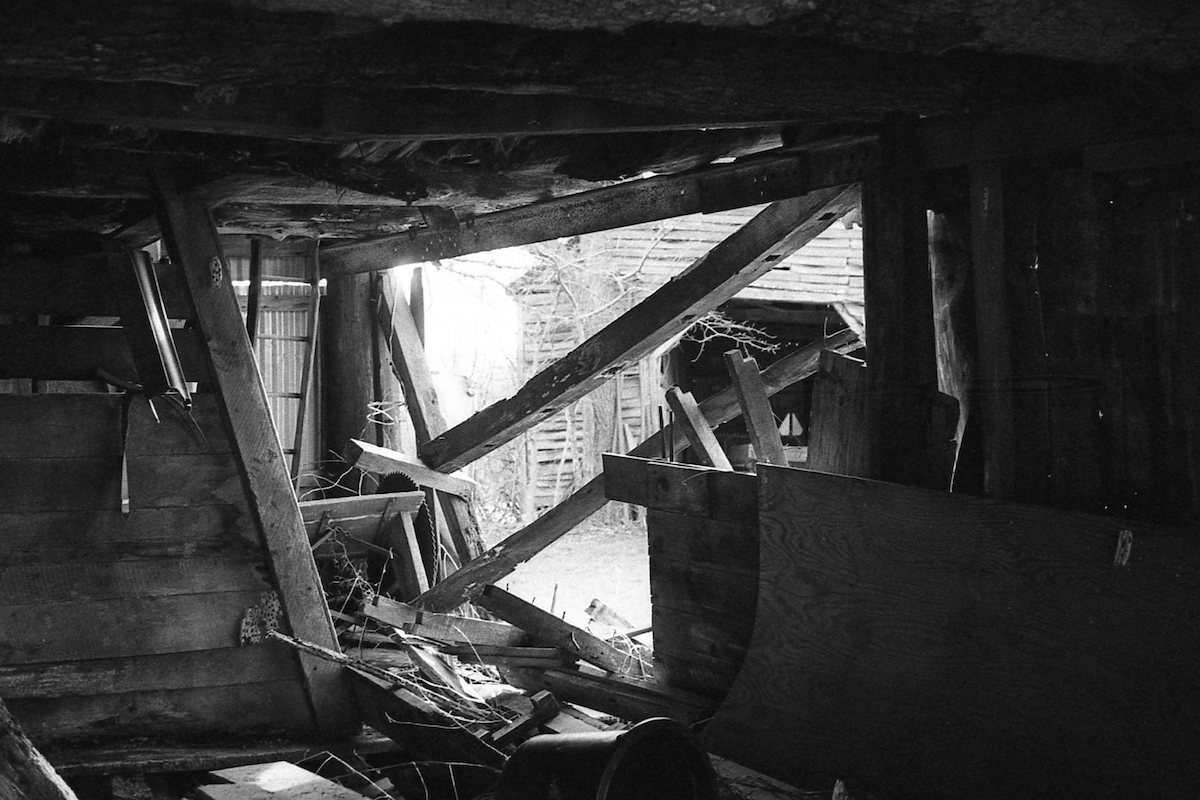
In an effort to give her some room, my uncle Jim suggests that we should “take turns,” and the room clears out into the hallway until I am left. As if she’s been watching me through those translucent eyelids, or was only pretending to be asleep until we could be alone, Moggie opens her eyes. Somehow, she knows it’s I who’ve stayed. Moggie is looking straight as truth at my eyes. Not her usual drawling smile, tired and lovely as a lily bent to its own beauty, but direct in a way I have never seen. These will be the last words she speaks to me.
“Henry,” she scolds, “don’t look so angry.”
My wife Jessica can’t help but roll her eyes whenever someone asks me where I’m from. I envy her and anyone else who grew up in one place, lived their whole lives in a matter-of-fact existence where home is simply the place where you reside. They don’t have anything to explain. They have high school friends who return on holidays and share with them a reality, a version of home. They belong to it. They agree on it.
I am the second generation in the Churchman family that has grown up away from Chapel Hill, and even this has to be explained. My mother’s maiden name isn’t even Churchman; that was my grandmother’s name. Her father, my great-grandfather Charles Churchman, returned to Chapel Hill from WWI a Marine captain awarded the Croix de Guerre and fell dead as if shot by that heart in 1932 at the age of forty-one (my age now), leaving the farm to Mommom and their four children. Instead of going to Charles—the only son and bearer of the Churchman name—the farm was passed to Moggie, presumably because RW had the knowledge and will to run it. This began a tradition of female inheritance at Chapel Hill that has continued.
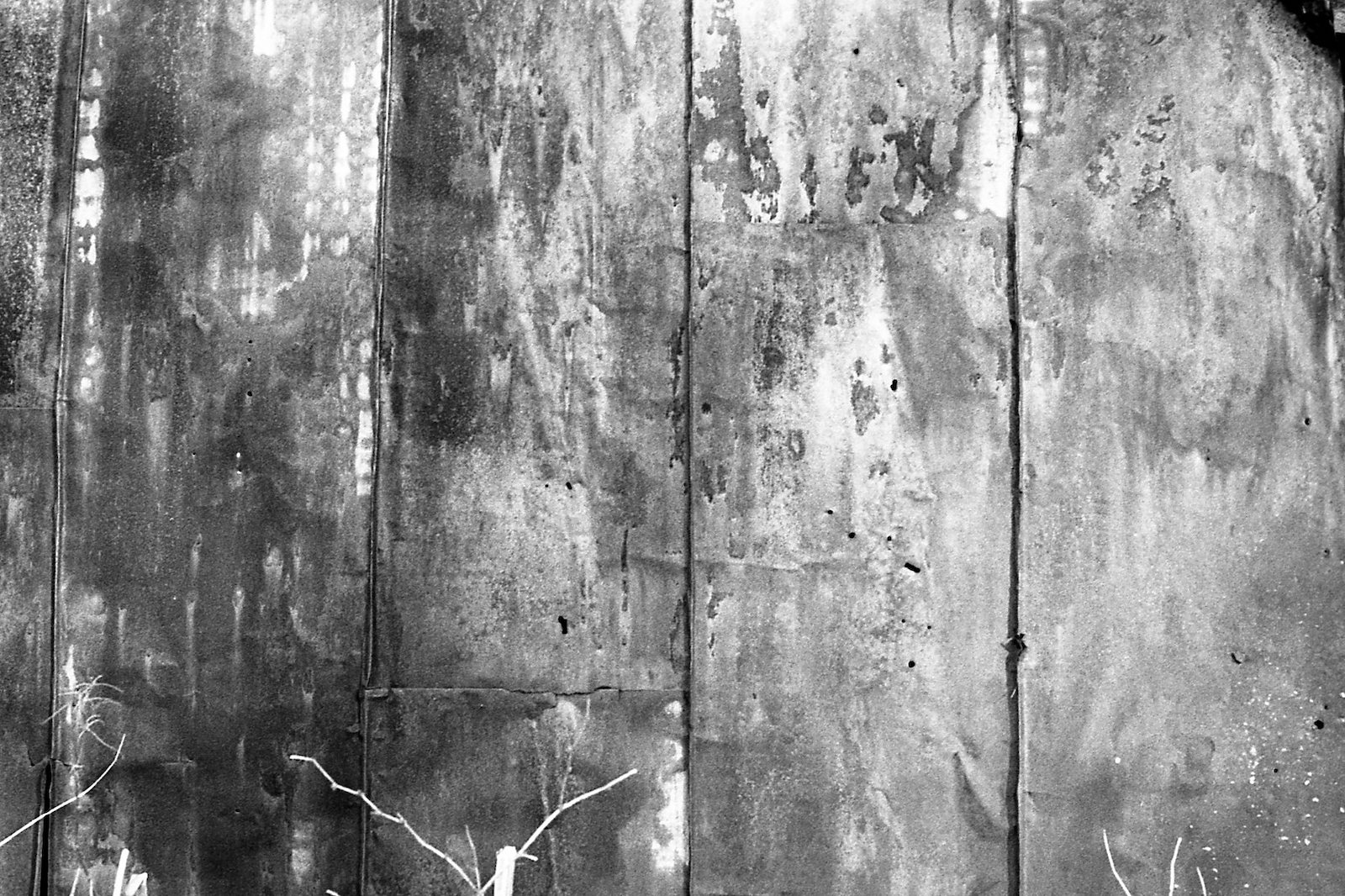
Churchmans are a clan of big clumsy hugs, approximations, a self-effacing deadpan, and sideways speech. An almost visible umbilical connects us to the farm and to each other. It is a family where blood ties are as strong as the sweet tea my mother brews, rendering second cousins cousins, cousins siblings, great aunts and uncles bonus grandparents. My mother will drive anywhere for family, to the point of ridiculous whimsy, not thinking past the warm rush of storming into a room full of Churchmans. We are paradoxically impulsive and indecisive, proud and apologetic, indirect and opinionated, ambitious and aimless, cheerful and melancholy, patient and reckless, feudal and ready to forgive.
The farm was an elixir for anything, it seemed.
My sisters and I were raised to understand Chapel Hill as home. It was, in any case, the home of our mother’s heart. I remember the years we lived away—in Jackson, Mississippi, and Richmond, Virginia—how she pined for the mountains. When we’d visit Chapel Hill, I sensed how strong she felt. The farm was an elixir for anything, it seemed. A photograph would not suffice; you had to see it in person, set foot in the yard, breathe the air. The experience of being at Chapel Hill was something you could harvest and store up and feed on until the next return.
Home is a problem of interest to me, particularly for southerners. America prides itself on offering new beginnings, second chances, opportunities to reinvent the self. But that is not the story of Chapel Hill. For my family, it is not an option to start over, for reinvention requires a kind of amnesia, an act of desertion. Forgetting where you have come from is a sin, and there can be nothing worse, for that means exile. For us, home is an inheritance that defines us.
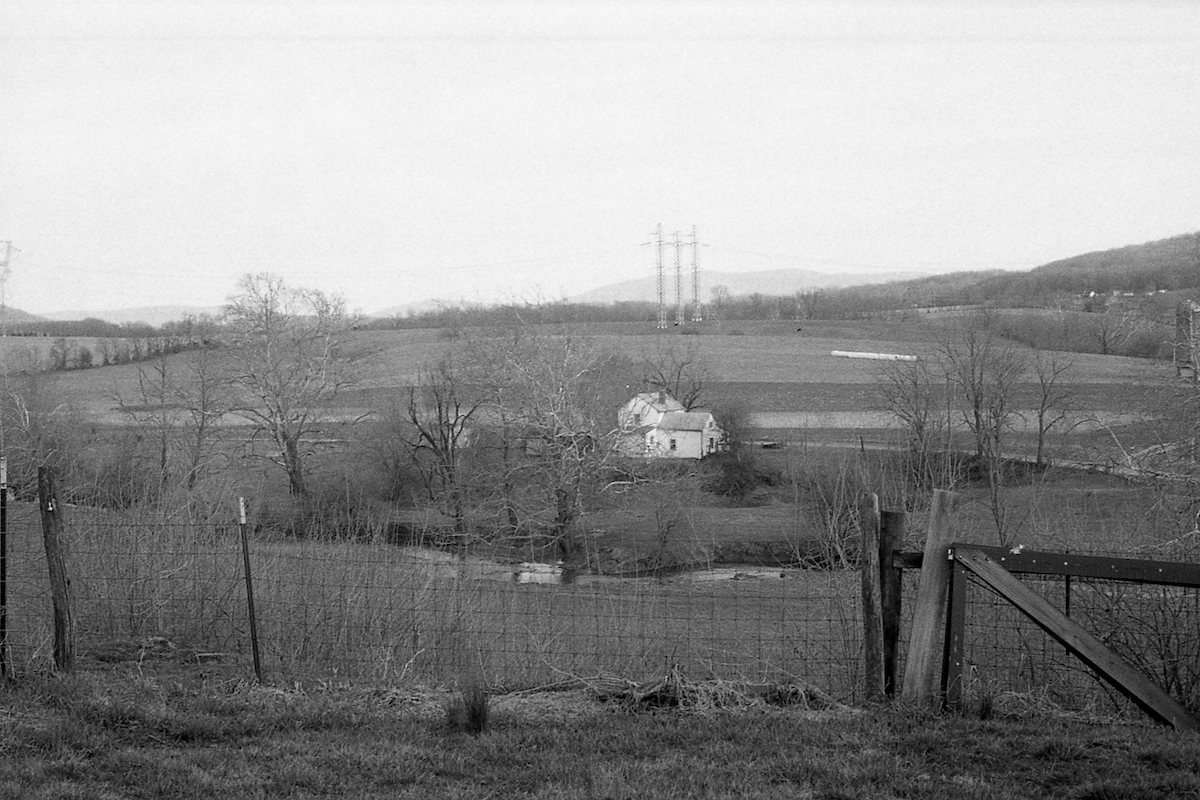
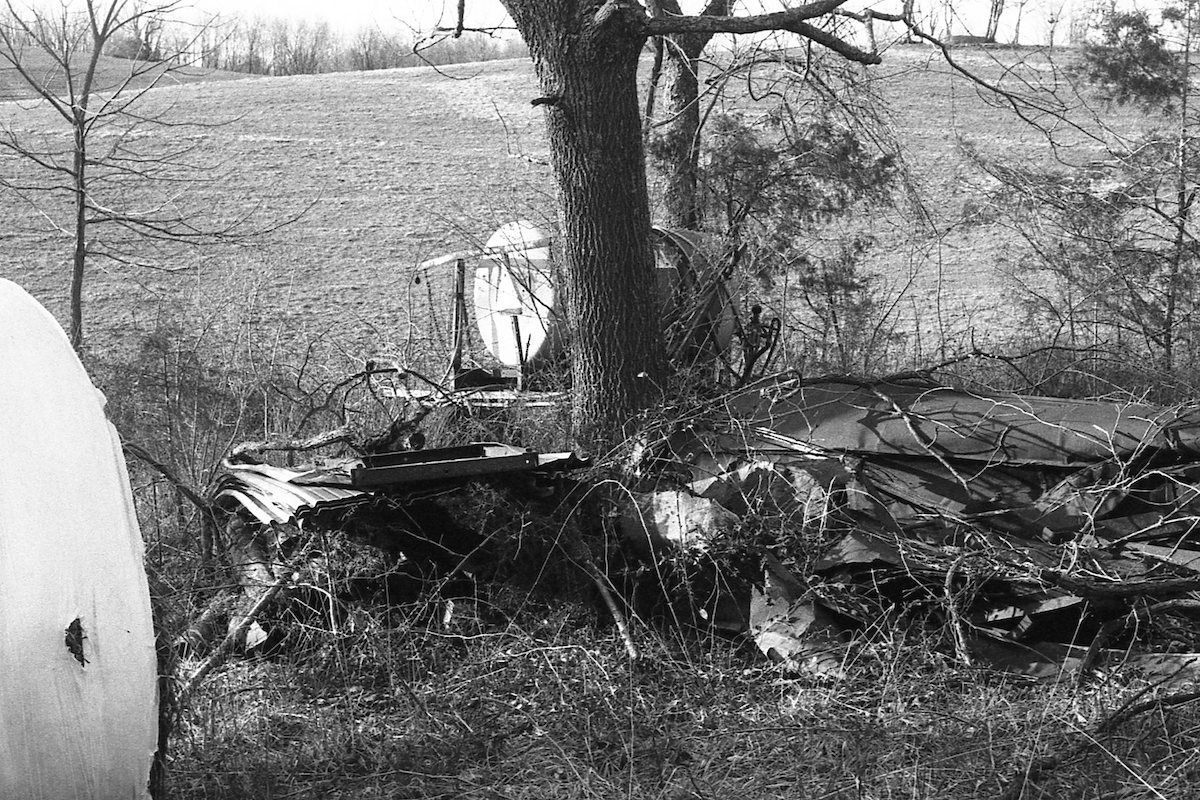
The freest I have ever felt was when I moved to Taiwan to teach at the ROC Military Academy. For the first time, I was simply “American.” I found fascinating the history of “the beautiful island,” its complex tension with China intriguing, if not familiar. Like Taiwan, the American South I know resents the imposition of a federal government and prefers to be left alone. I understood better than I should have the lostness in the eyes of Taiwanese whose ancestors had fled the mainland in ’49, following generalissimo Chiang Kai-shek. When I asked where they were from, some would answer with any one of the giant provinces in China, even though they had never been there. Home to them, as well as my family, is more than a place of residence.
Much of what I have learned about Chapel Hill has been a kind of compilation of information, read and heard, through stories told by both family and non-family. As Harry Crews argues in his memoir, A Childhood: The Biography of a Place, stories serve an important role in the self-awareness of a culture: “Nothing is allowed to die in a society of storytelling people. It is all—the good and the bad—carted up and brought along from one generation to the next. And everything that is brought along is colored and shaped by those who bring it.” I know many ancestors not as facts but as characters. Through stories, I have learned how I was forged by Chapel Hill and by others it forged before me.3
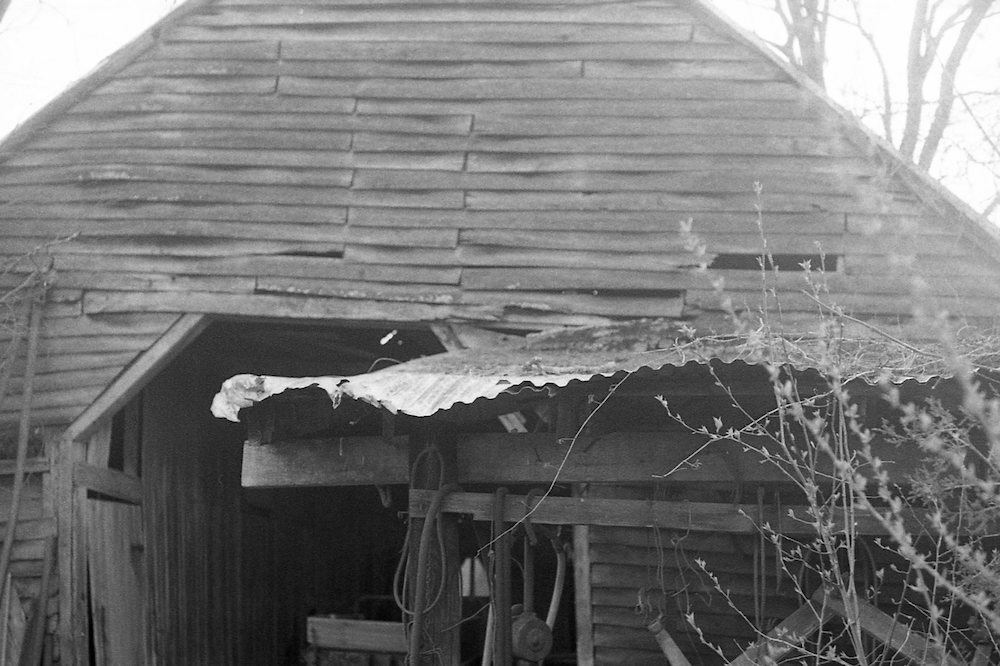
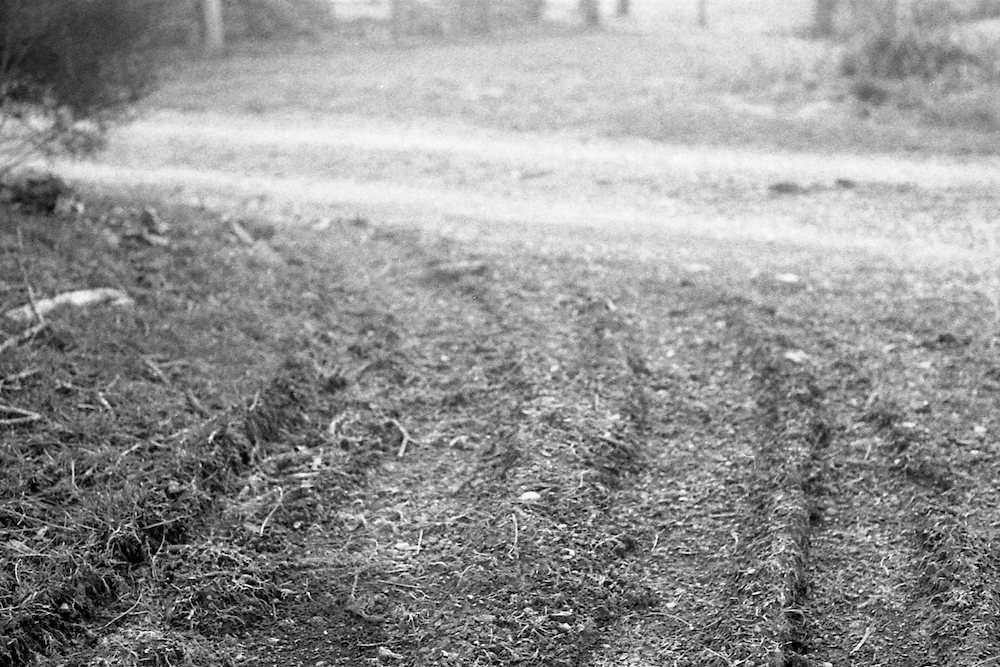
One of my most memorable history lessons at Chapel Hill didn’t have anything to do with the house or my ancestors. RW sat me down on the bed he shared with Moggie (the bed she will die in) and let me choose three arrowheads from one of the many gallon jugs he kept in the room, a lifetime of artifacts he’d collected while farming. I still have those arrowheads. I learned that day that our family came after other families, that Chapel Hill—old as it is—represents only a small piece of history. Before us, the Shenandoah Valley served as an avenue called the Warrior’s Path for various tribes and was a kind of communal hunting area of buffalo and other game. Today, you will see names honoring the animal (Buffalo Creek, South Buffalo, etc.) and can find impressions in the hills that were likely wallows. To this day, I help my uncle Jim on his farm in Rockbridge County, about thirty miles south of Chapel Hill (where he used to help his uncle RW). We rotate the cows to encourage the primal migrations of herd animals once indigenous to the area. The Shenandoah’s sweeping savannas for thousands of years have made plentiful country for grazing, and though we no longer have buffalo, we are participating in a tradition the best we can. Every time I ride the tractor or move a fence or try to trick a cow back into a field he or she has escaped, I am grounded and humbled, finding connection to my personal history but also to all history and prehistory through the soil itself.
I leave the room, walk past the throng, disappear into the old house alone. I can hear its breathing, its pulse, as I descend the stairs into the living room. A pallid rug covers the wood floor, and the windows looking out over the yard through thin lace curtains illuminate the room with a hazy washed-out glow. Ornate antique chairs and couches surround a cold fireplace.
I open the door to the portico. The front door (like everything else made of walnut from Chapel Hill) was grained to appear as birdseye maple. A grandfather clock RW made stands ten or so feet tall. A mid-nineteenth-century photograph of Chapel Hill from the front entrance hangs from the wall.
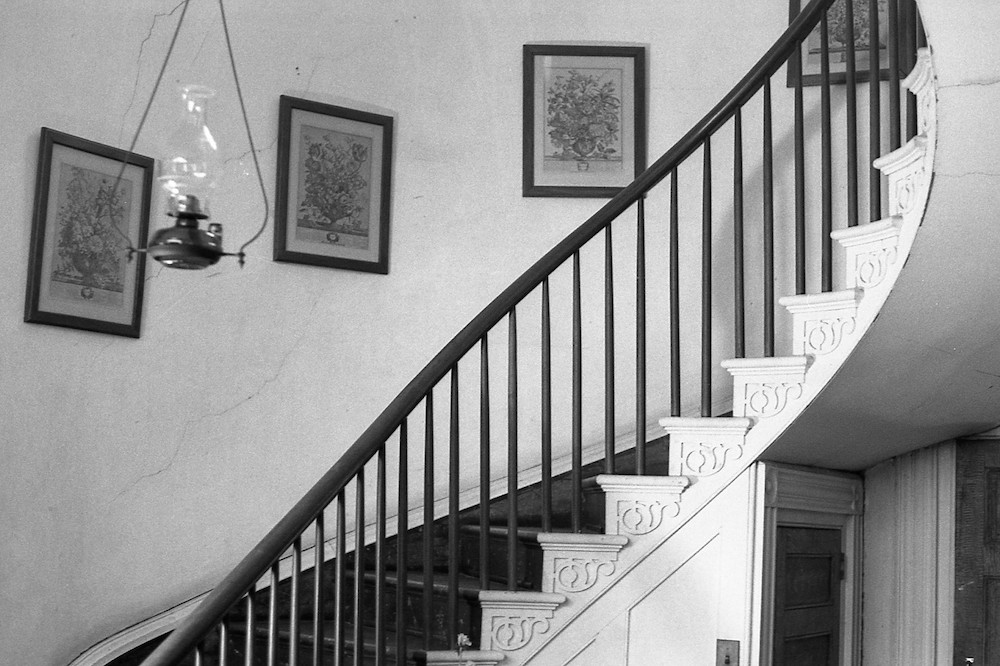
Then into the parlor, the room that has most captivated me all my life. A gauze of curtains over the grand windows on either end, a dim room, warped glass windows behind which the outside world shimmers like a mirage or dream. The silhouette of the spinning wheel dark and certain against that cold distilled light that traps dust like gnats. An intricate wood stove fills the fireplace beneath a walnut mantle textured to look like dark marble. Most arresting is the French wallpaper, which dates back either to 1815 or 1824, titled “Le Petit Decas” or “Le Petit Décor,” in which Romanesque ruins, purported to be the gardens at Versailles, unfold without repetition.4
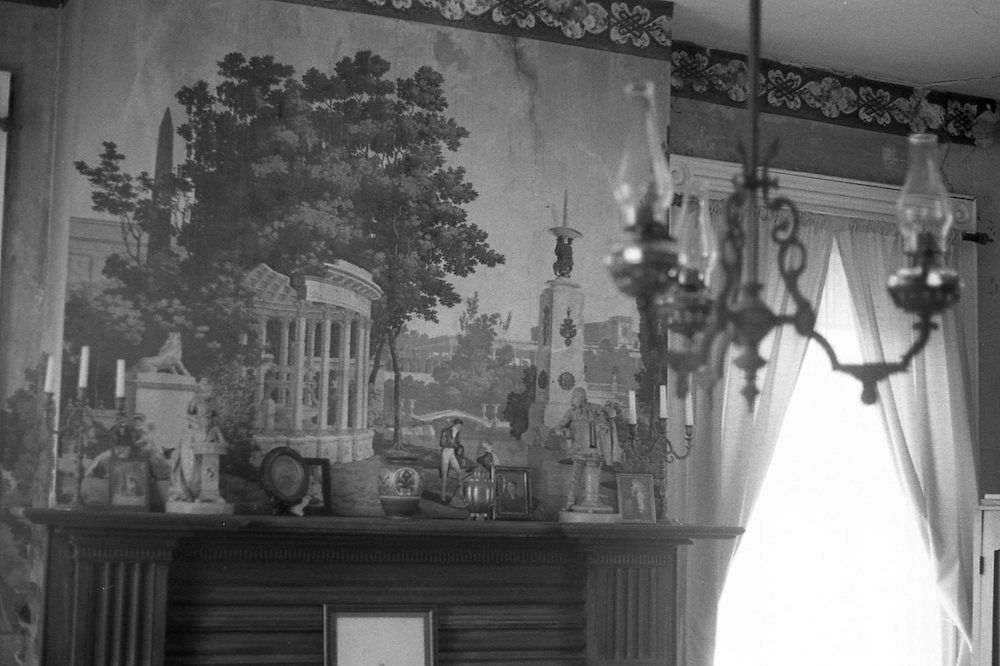
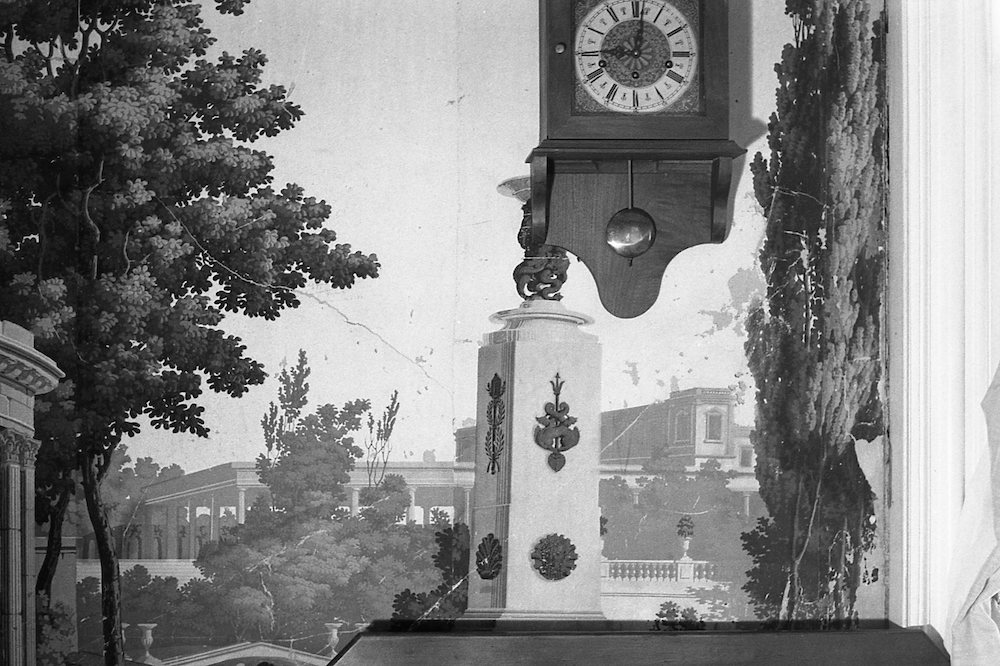
I hear men’s voices outside, Brent and now Robert, Harry back from Alaska. Beyond them, the sound of highway trucks and cars, a world away. I hold my breath. I need to leave, should have left already.
But I don’t drive off yet. Instead, I march toward the back fields, where cicadas sound off. I watch a limb turn to snake. A small hot breeze moves the heavy boughs of the great trees, exploding with growth. The air smells of sour apples and rotting black walnuts. I open the fence I used to crawl under, enter the land back where RW used to walk me through the corn stalks, holding my little hand.
These are the fields where I first learned about death and guilt, where I used to go and sit in the unlit woods until I dissolved and the animals came back out, until I didn’t exist, until I was light as a cloud, almost free. I would return to the house holding squirrels by their tails and skin them at the stump in the yard, then Moggie would prepare the meat with her peppery squirrel gravy, and RW and I would sit out on the porch late into the night, talking or not talking. I was lucky to have those days, to listen and grow. They are days I will always have, days I will never have again.
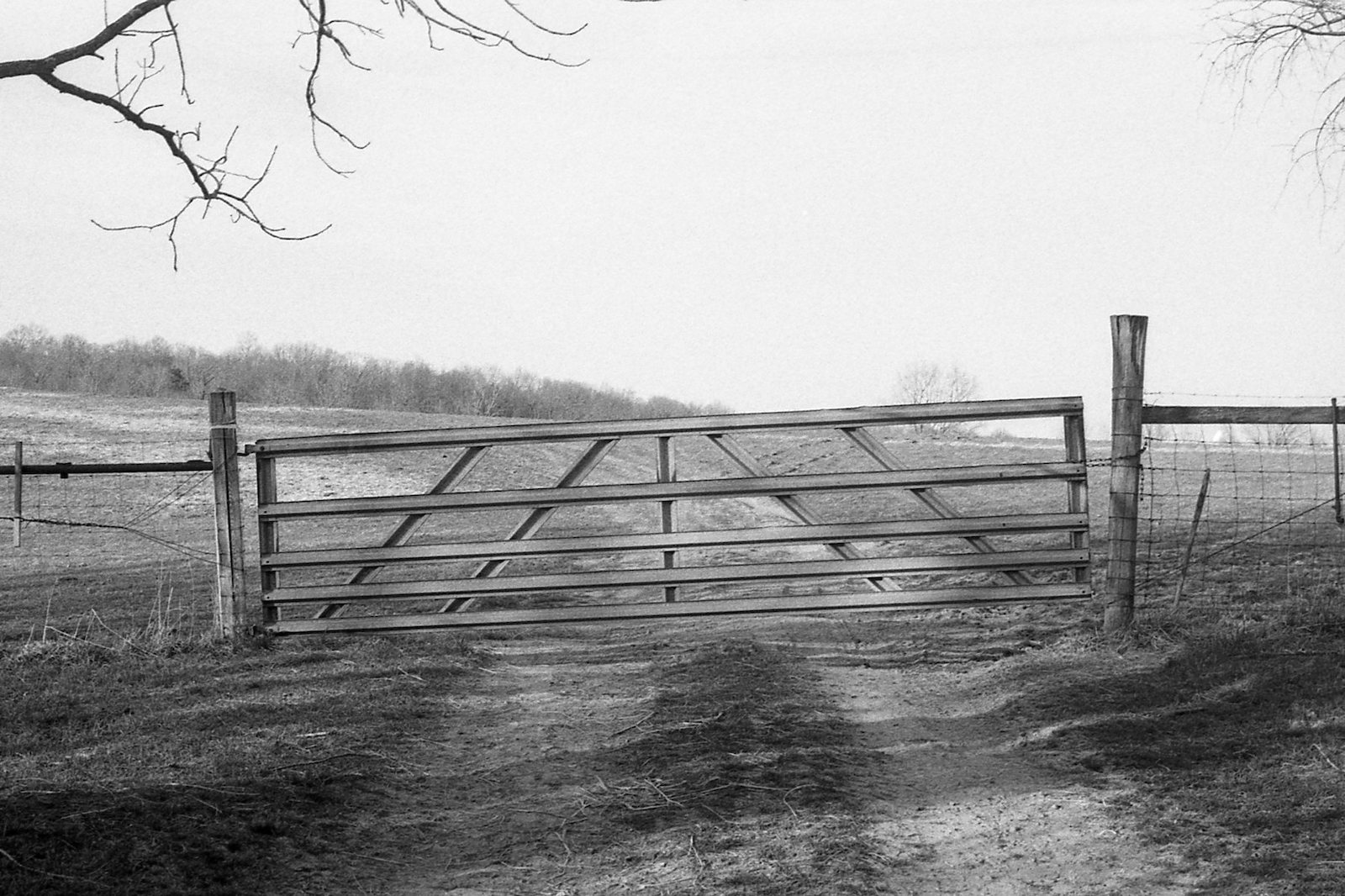
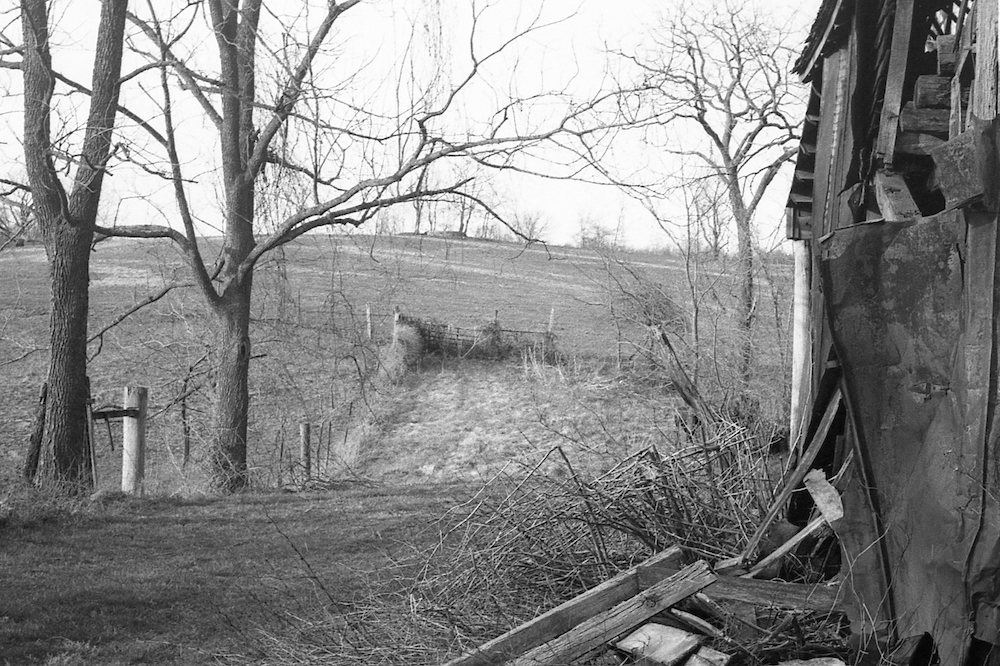
When I drive far back on the property, I follow the mud road descending the little ravine, sleep back under the stars, listen to the highway. Even in the deepest woods, I can hear the howls of Highway 81, a sound wilder somehow than that of bucks locking antlers or the yipping chorus of coyotes who are closer to my fire than I’d like. I wake with the sun rising, a crick in my neck. Dirty, lean, hungry. Someone living under the sun and stars of some previous eternity. I rebuild the fire from coals, make coffee. Then I spend the day looking over fields, deciding by the moment what to do—loafing, pining. Likely as I will kill nothing, I will go unarmed into woods, stalking, observing.
I’ve been in the woods for days, living on coffee and a little moonshine. The summer air is tacky. In four-wheel drive, I lurch up the slanted mud ravine path I won’t drive in the rain (not after almost losing my truck once), emerging like some creature out of the past, some survivor of an untold war, starving after days that became years, heading back toward the house where my grandmother grew up and studied by candlelight. Robert is coming at me on his four-wheeler, not so much my mother’s cousin as a brother, a child of the same house. I stop before the path narrows, and he slows beside me. I am filthy and I haven’t shaved or eaten a proper meal in days. My truck is spattered with mud and cow shit, and piled with clattering gear, a bona fide jalopy. Suddenly, like a kid, I bust into a grin that must look ridiculous. I can’t help it. Robert could level me with his country storyteller’s wit that reminds me so much of RW with a joke about smiling like a dope or sleeping out like a rebel or a vagrant without a friend in the world when there’s a perfectly good house down below. But instead, he spits out the side of his mouth, “Now, that’s the Henry Wise I like to see.”
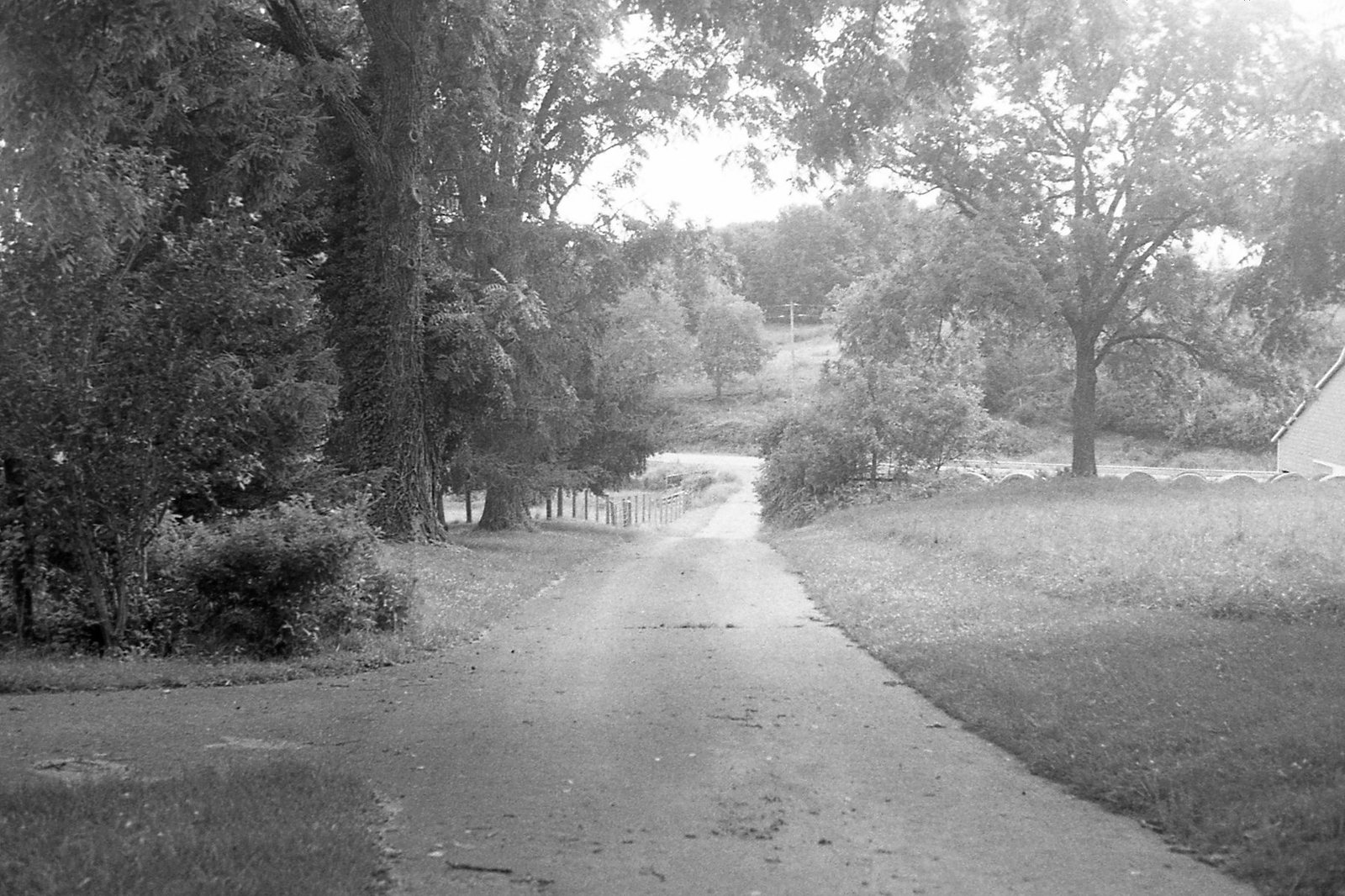
Henry Wise is an Assistant Professor of English at the Virginia Military Institute. A writer across multiple genres, his poetry has been published in Shenandoah, Radar Poetry, Clackamas, Nixes Mate Review, and elsewhere. His debut novel, Holy City, about a crime in rural Virginia, is forthcoming from Grove Atlantic in June 2024.
- Herman Melville, Moby-Dick; or The Whale, June 2001 (eBook #2701),https://www.gutenberg.org/files/2701/2701-h/2701-h.htm.
- “National Register of Historic Places Inventory—Nomination Form,” Virginia Department of Historic Resources accessed October 18, 2021,https://www.dhr.virginia.gov/wp-content/uploads/2018/04/007-0012_Chapel_Hill_1978_Final_Nomination.pdf.
- Harry Crews, “A Childhood: The Biography of a Place,” in Classic Crews: A Harry Crews Reader (New York: Touchstone), 21.
- “007-0012 Chapel Hill,” Virginia Department of Historic Resources accessed October 18, 2021,https://www.dhr.virginia.gov/historic-registers/007-0012/. The Virginia Department of Historic Resources states both titles in its description of the wallpaper.
Bibliography
“007-0012 Chapel Hill,” Virginia Department of Historic Resources, accessed October 18, 2021, https://www.dhr.virginia.gov/historic-registers/007-0012/.
Harry Crews, “A Childhood: The Biography of a Place,” in Classic Crews: A Harry Crews Reader (New York: Touchstone, 1993).
Herman Melville, Moby-Dick; or The Whale, Project Gutenberg, June 2001 (eBook #2701), https://www.gutenberg.org/files/2701/2701-h/2701-h.htm.
“National Register of Historic Places Inventory—Nomination Form,” Virginia Department of Historic Resources, accessed October 18, 2021, https://www.dhr.virginia.gov/wp-content/uploads/2018/04/007-0012_Chapel_Hill_1978_Final_Nomination.pdf.

